Dr Vino's wine blog
wine talk that goes down easy
Napa Valley struggles to escape “time warp”!
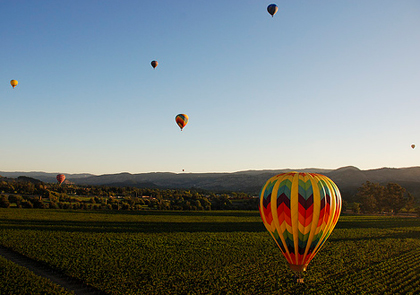
“We have to upgrade everything! Get me Facebook and Twitter!” So says renowned Napa winemaker, Mike Grigich, age 87, in a story in today’s NYT dining section. The story elaborates on the difficult times of selling expensive wines from Napa and how wineries are struggling to adopt new sales techniques, including social media.
It’s hard to know from that quote if a presence on Facebook and Twitter is a part or all of Grgich’s social media strategy. But, as we’ve discussed before, social media are no panacea for wineries, especially since they are too often a regurgitation of marketing pabulum. At best, social media are a part of (Napa) wineries’ new efforts to reach out to consumers directly and bypass the distributor tier, which can lead to increased profits for the winery. The NYT story cites a “meager” 10 percent of average winery sales in Napa are direct to consumer, via tasting rooms and mailing lists.
One thing that businesses can do well via social media, particularly since the demographic skews younger, is to alert consumers to deals. Unfortunately, deals are in scarce supply from wineries directly. The story cites the 2006 Stag’s Leap Wine Cellars merlot available at the tasting room for $45 when it is available at Target in the Bay Area for $31.99. Will Stag’s Leap be tweeting about this? Doubtful.
The article alludes to a “curious time warp” with winery tasting room practices and pricing. More evidence of the pricing time warp came last week when a Napa cab from Stephane Derenoncourt launched at $220. While the pricing showed a tin ear to the current economy, the press release contained something unusual that may have been a sign of the times: a plea to write about the new wine.
If Derenoncourt were releasing a $20 Napa cab, that would be worth tweeting.
“Try the Red: Napa Learns to Sell” by Katrina Heron.
Farmers dump [yellow tail] in protest
Flipping through the pages of porkmag.com the other day, I was surprised to see that [yellow tail] has donated $100,000 to the Humane Society of the United States. Farmers are now protesting the move by dumping the wine on camera, such as the video above entitled “Yellow Tail is now yellow fail.” The farmers dislike the HSUS because the organization opposes factory farming. [yellow tail] has sold tens of millions of cases of wine around the world since being launched in 2001.
In response, a [yellow tail] representative wrote to porkmag.com, “now we are specifically directing our $100,000 donation to HSUS’ Animal Rescue Team, which launch on-the-ground missions to rescue animals in peril…We may not always agree with 100 percent of what an organization represents, but rescuing animals displaced from natural disasters is a cause we support.”
Wine shops in states with supermarket sales – three views
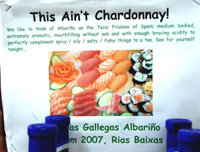 New York legislators are considering a shift to allow wine to be sold in supermarkets–and wine stores to sell gourmet cheese, cigars, beer and even have ATMs. To find out how small shops can even exist in such an environment, we turn to three “mom & pop” shops in three of the 35 states that currently allow such competition. Click through for tales from The Bottle Shop in Wilmette, IL, Wine Authorities in Durham, NC, and Wine Expo in Santa Monica, CA. To their thoughts, after the jump! Read more…
New York legislators are considering a shift to allow wine to be sold in supermarkets–and wine stores to sell gourmet cheese, cigars, beer and even have ATMs. To find out how small shops can even exist in such an environment, we turn to three “mom & pop” shops in three of the 35 states that currently allow such competition. Click through for tales from The Bottle Shop in Wilmette, IL, Wine Authorities in Durham, NC, and Wine Expo in Santa Monica, CA. To their thoughts, after the jump! Read more…
Gladwell: cultural norms affect drinking!
Malcolm Gladwell cracks open a cold one and distills some academic research, as is his wont. This week’s topic: drinking and culture. After discussing the extended example of Bolivians and their norms for drinking 180 proof rum on weekends, he comes to the point that it’s not how much people drink but rather how they drink it that matters.
But wine lovers knew this! Since at least King James and Thomas Jefferson, wine has been seen wine as a drink of moderation, lower in alcohol than spirits and consumed with food. Gladwell cites research from the 1950s that showed that first-generation Italian immigrants in New Haven, CT had very low levels of alcoholism, despite drinking some wine with lunch and dinner. Other immigrant groups and second- and third-generation Italians had different patterns of consumption (less moderation, less with food) and had higher rates of alcoholism.
This relates to our discussion last fall teaching about wine in elementary schools, in Italy and America.
It’s good to see the topic getting a broad airing–check out the story if you are snowed in somewhere (it’s not available online). Here’s a taste:
The abuse of alcohol has, historically, been thought of as a moral failing. Muslims and Mormons and many kinds of fundamentalist Christians do not drink, because they consider alcohol an invitation to sin. Around the middle of the last century, alcoholism began to be widely considered a disease: it was recognized that some proportion of the population was genetically susceptible to the effects of drinking. Policymakers, meanwhile, have become increasingly interested in using economic and legal tools to control alcohol-related behavior: that’s why the drinking age has been raised from eighteen to twenty-one, why drunk-driving laws have been toughened, and why alcohol is taxed heavily. Today, our approach to the social burden of alcohol is best described as a mixture of all three: we moralize, medicalize, and legalize.
“Drinking Games: How much people drink may matter less than how they drink it.” Malcolm Gladwell, The New Yorker, Feb 15 & 22, 2010. pp. 70 – 76.
The chocofight 2010! Pairing wine and chocolate – pleasure or pain?
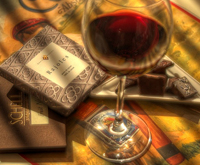 Valentine’s Day is rapidly approaching. It has reignited the annual hot debate in anticipation of the hot date: should you pair wine and chocolate?
Valentine’s Day is rapidly approaching. It has reignited the annual hot debate in anticipation of the hot date: should you pair wine and chocolate?
Consider this exchange. Paul Grieco, owner of Hearth restaurant and Terroir wine bar in NYC, tweeted that he was going on the TODAY show to talk wine and chocolate. (See segment here: both regular and sparkling shiraz feature.) Eric Asimov tweets back “chocolate and wine? what are you thinking, man? Who cares about what to drink with chocolate? Food mag nonsense.”
Oooh, snap! Wine and chocolate are two fine things. But this is one of those “impossible” pairings that has yet to convince me. My rule of thumb: Have wine before dinner. Have wine with dinner. But let chocolate dessert stand alone! Then resume drinking, if necessary. (Or try a Banyuls with the chocolate dessert if it’s a question of life or date.)
Have your say about the great chocofight 2010 in the comments–or with the latest poll!
[poll id=”11″]
Will the recession liberalize wine laws? What to watch
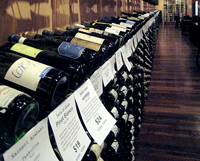 Several states in America, land of the free, own the means of distribution–when it comes to wine, spirits and beer. You don’t have to be a Tea Party member to wonder if this is the best arrangement.
Several states in America, land of the free, own the means of distribution–when it comes to wine, spirits and beer. You don’t have to be a Tea Party member to wonder if this is the best arrangement.
Thanks to shortfalls in state budgets, state authorities are increasingly looking to liberalize liquor distribution according to a piece in the WSJ yesterday. The issue is in play in at least Washington State, Virginia, North Carolina, Mississippi, and Vermont.
Privatization could be a mixed bag for wine enthusiasts. Read more…
Snowpocalypse! Wine tips from The Twitterverse
![]() Yet another winter storm rips up the Atlantic coast. Areas that just got hit with two feet of snow may get another two feet starting today. What’s a wine lover to do? We turn to The Twitter: Read more…
Yet another winter storm rips up the Atlantic coast. Areas that just got hit with two feet of snow may get another two feet starting today. What’s a wine lover to do? We turn to The Twitter: Read more…
Hoose juice, blogs, cheap Pinot, wine in food stores – sipped and spit
SPIT: “pinot noir”
Pinot or dunno? The cachet and appeal of the fickle pinot noir has led to a proliferation of low-priced pinots, which, by US law, must only contain 75 percent to state the grape on the label. Decanter reports that French authorities have brought charges against 13 defendants in the the south of France for stretching pinot more than that, selling the equivalent of 16 million bottles worth of cheaper merlot and syrah to E & J Gallo for their $9 Red Bicylcette pinot noir. The court will likely hand down its decision in two weeks.
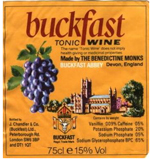 GULPED: “wine”
GULPED: “wine”
The scourge of Scotland is Buckfast tonic wine, caffeinated, sweet drink made by Benedictine monks. Weighing in at 15% alcohol and with the caffeine equivalent of eight cans of Coke, this low-priced drink has been dubbed “wreck the hoose juice” (hoose being the Scottish pronunciation of “house”) or “commotion lotion.” It has sparked a debate on whether to introduce minimum prices for alcoholic drinks in Scotland. [NYTimes.com]
SIPPED: wine in supermarkets
The editorial page of the NYT argues in favor of wine in grocery stores calling the campaign against it “an impassioned but utterly cynical defense of the little guy.”
SIPPED: science!
Have a vineyard fungus? Science has a solution: liquid spray-on glass! All those pears grown in glass bottles, move over! [Telegraph]
SPIT: blogs for young people
Younger Americans, aged 12 – 29, are abandoning blogging in favor or Twitter and Facebook. Why? Too long – LOL! But the study from the Pew Internet & American Life Project does find blogging on the rise in ancient people (over thirty) where more than one in ten maintains a blog.



